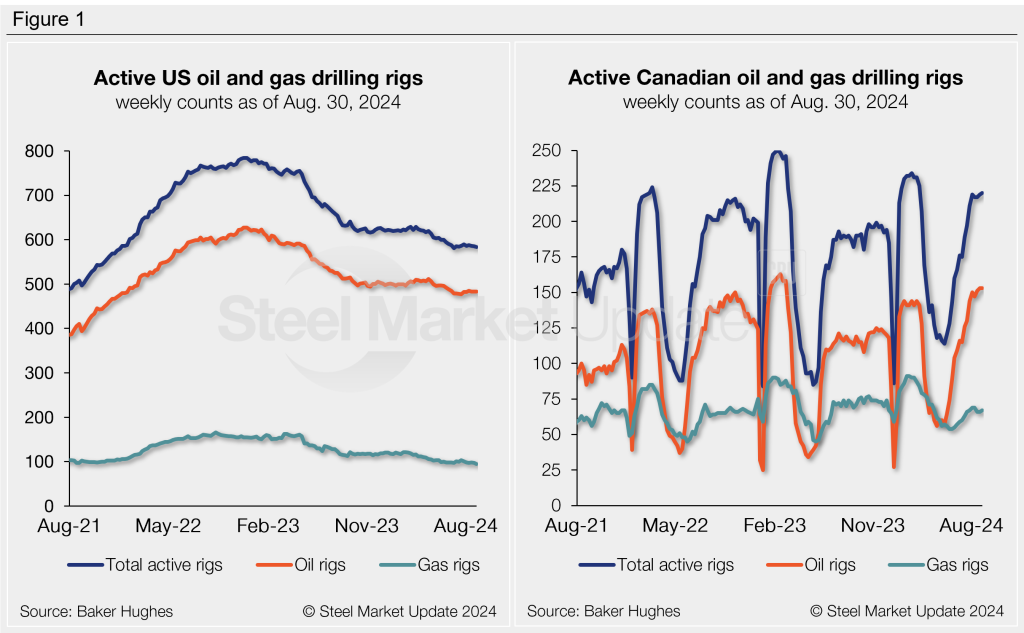Analysis
August 30, 2024
Active rig counts dip in US, rise in Canada
Written by Brett Linton
Active US drill rig counts eased further last week while Canadian activity hit a near six-month high, according to the latest data release from Baker Hughes.
US rigs
US rig activity continues to hover near multi-year lows. Through Aug. 30, there were 583 drilling rigs operating in the US, two fewer than the week prior. Oil rigs held steady at 483, gas rigs fell by two to 95, and miscellaneous rigs were stable at five.
There were 48 fewer active US rigs last week compared to the same week last year, with 29 fewer oil rigs and 19 fewer gas rigs.
Canada rigs
Last week, there were 220 active Canadian drilling rigs, the highest count recorded since early March. The latest count is one higher than the week prior. Oil rigs held steady at 153 and gas rigs rose by one to 67.
There are currently 33 more Canadian rigs in operation than levels one year ago, with 38 more oil rigs and five fewer gas rigs.

International rig count
The international rig count is updated monthly. The total number of active rigs for the month of July fell to 934, 23 fewer than the June count and down by 27 from levels one year prior. This monthly count should be updated next week.

The Baker Hughes rig count is important to the steel industry because it is a leading indicator of demand for oil country tubular goods (OCTG), a key end market for steel sheet. A rotary rig rotates the drill pipe from the surface to either drill a new well or sidetrack an existing one. For a history of the US and Canadian rig counts, visit the rig count page on our website.







